- Home
- T.A. Barron
Merlin: The Book of Magic Page 2
Merlin: The Book of Magic Read online
Page 2
As much as Merlin hated this bully, he dashed into a raging fire to save Dinatius's life. But Merlin didn't learn, until much later, whether he had succeeded. For those very flames destroyed his eyes, forcing him to find a new way to see—a way befitting a wizard. And when Merlin did, at last, discover the truth about Dinatius, it was a wrenching surprise.
Domnu
… She is older than time.
Beautiful is not the word to describe the ancient hag of Fincayra's dreaded Haunted Marsh. She has no hair on her head; her scalp is so wrinkled that it looks like the folds of an exposed brain. One large wart sprouts like a horn from the middle of her forehead. Her mouth is filled with angular, crooked teeth. And her eyes, utterly black, never blink.
Domnu, whose name means dark fate, wears a simple robe that resembles a cloth sack with many pockets and always goes barefoot. Yet despite her simple garb, she carries an aura of great power and deep mystery. She is, after all, older than time—and oblivious to the fickle demands of morality. As the bard Cairpré described her to young Merlin and Shim, "Domnu is neither good nor evil, friend nor foe, mortal nor immortal. She simply is." But she does have a merciful side: When she sees how frightened Shim is, she consoles him, "Be not scared. Dying isn't so bad after the first time."
An avid gambler, she loves to place wagers on things she deems worthless, such as dice, chess pieces, or human lives. Piles of objects she uses for games of chance—bones, jewels,spools of yarn, cards, pebbles, shells, and eyeballs—are everywhere in her lair; the walls are covered with jumbled calculations, symbols, and runes. When Merlin asks for her help, she grins, showing her misshapen teeth, and replies, "What would you like to wager, my pet?"
Elen of the Sapphire Eyes
No wonder she helped Merlin become a man of many worlds and many times: Elen's life bridged Earth, Fincayra, and Avalon. On Earth, she was called Branwen; in Fincayra, she was known as Elen of the Sapphire Eyes; and in Avalon, she became Elen the Founder. Her breadth as a person enabled her to love two very different men—the gentle poet Cairpré and the ruthless king Stangmar.
Similarly, Elen's spiritual breadth enabled her to draw from several different faiths. Combining the wisdom of Druids, Christians, and Jews, she became a skilled healer as well as a bard, and she had a special fondness for Greek myths. As likely to tell a tale about the healer from Galilee as she was to speak of Moses or Athena, she was respected by the most learned people in her midst—and reviled by the most intolerant. In fact, her son, the young Merlin, first called upon his magical powers to save her from being burned at the stake by some of her enemies, a gang of young ruffians led by Dinatius. While Merlin did manage to save Elen's life, he started a terrible fire that caused him to lose forever the use of his eyes. In time, with Elen's help, he learned to see in an entirely different, more powerful way—not with his eyes, but with his heart.
Later, when Merlin's magical seed gave birth to the world of Avalon, Elen and her daughter, Rhia, founded a new spiritual order: the Society of the Whole, dedicated to promoting harmony among all living creatures and to protecting the Great Tree that sustains all life. This new faith, which began as just a gleam in its founder's sapphire eyes, spread rapidly across Avalon. It paid close attention to the seven sacred Elements—Earth, Air, Fire, Water, Life, LightDark, and Mystery—which together constitute the Whole. Elen and her followers (including Rhia, Lleu of the One Ear, and Babd Catha) built their sacred compound in Stoneroot. And in the compound's very center stood a Great Temple that was, in fact, the circle of stones from Lost Fincayra known as the Dance of the Giants.
When Elen died, in the Year of Avalon 37, creatures everywhere grieved. People of all kinds wore sapphires in her honor. And the great spirit Dagda personally guided her spirit all the way to the Otherworld. There she could, at last, rejoin her life's greatest love, the bard Cairpré.
Eremon
When young Merlin saved a pair of deer—a doe and a stag—from huntsmen's arrows, he met two great friends. For they turned out to be deer people of Fincayra's Mellwyn-bri-Meath clan: Hallia, who would become Merlin's lover and lifelong companion, and Eremon, her true hearted brother. Eremon was the first to trust the young man—and the first to call him Young Hawk. When in human form, Eremon walked with long, loping strides. His feet were bare. Like his sister, he possessed rich brown eyes and the strong chin of the deer people. And like his sister, he knew that the best way to come to know each other was "to circle a story," one of the deer people's oldest traditions.
In time, Eremon saw much of himself in Merlin. That commonality deepened when he asked, "How do you know so much about your faults?"—to which Merlin replied, "That's easy. I have a sister." Finally, Eremon vowed to help Merlin on his quest to save the island from the dragon Valdearg—even if Eremon himself did not survive. As the deer man declared, "It is right to help another creature, no matter the shape of his track."
Galator
When young Merlin first saw the Galator one night early in his Lost Years, the pendant seemed to shine with its own light, not just the moon's. Right away, he noticed that the crystal was deep green, with rivers of violet and blue flowing beneath its surface and glints of red that pulsed with life. Truly, it looked almost like a living eye.
This pendant, once believed to be the last of the fabled Treasures of Fincayra, had a long history linking Fincayra with Avalon. Its journey connected many key people of both worlds. Worn by Elen of the Sapphire Eyes, given to Merlin, prized by Cairpré, stolen by Domnu, buried in lava during a battle with kreelixes, rescued by the great spirit Dagda, and carried to Avalon by Rhia, this deep green pendant ultimately belonged to the Lady of the Lake, her friend Nuic, and the young priestess Elli. Yet despite its many bearers, only Elli managed to tap its greatest power: to speak with the person she loved, across distances as vast as the sky itself. For the Galator's deepest magic enabled loved ones to see and hear each other beyond any limits of space and time.
Gobsken
… Vicious fighters who respond to fear, lust, and greed.
Looking for exceptionally good warriors who are also exceptionally bad company? Gobsken are your answer—unless you don't enjoy smelling breath so terrible it could fell an ogre. Gobsken have broad chests, burly limbs, greenish gray skin, and eyes as thin as slits. Their three-fingered hands curl naturally into fists. And they are swift to anger.
Like their ancient king Harshna, gobsken are vicious fighters who respond to fear, lust, and greed. While they are invariably rude, they are often quite clever, as well as persistent. As Fincayra's king Stangmar and Avalon's sorcerer Kulwych both proved, these qualities make gobsken ideal allies for those who serve the spirit warlord Rhita Gawr.
Grand Elusa
This enormous white spider, larger than a horse, lived in the Misted Hills of Lost Fincayra. Although her appetite was great—she ate so much that even living stones trembled at her approach—her wisdom was also great. That is why she sided with young Merlin and Rhia, and against the hag Domnu, at the Great Council that began the quest of the Seven Songs. And that is also why the peoples of that world ultimately chose the Grand Elusa to guard the precious Treasures of Fincayra, which included the Flowering Harp, the sword Deepercut, the Caller of Dreams, the Orb of Fire, and six of the Seven Wise Tools. (The seventh Tool, most people believed, had been lost in the Dance of the Giants that destroyed Stangmar's Shrouded Castle. But Merlin later discovered it.)
Over his long life, Merlin never forgot the great white spider. But he had a different reason: It was in her lair in the Misted Hills that he first encountered the beauty of a crystal cave. Quietly, he vowed that one day he, too, would live in a cave of such natural magnificence.
As a gift to the peoples of Avalon, the Grand Elusa wove a glistening gown of spider's silk for Elen of the Sapphire Eyes. This became the traditional gown of the High Priestess of the Society of the Whole. In time, that gown was worn by Elen's daughter, Rhiannon, as well as by Coerria. Yet no one loved its gra
ceful design more than a young apprentice third class named Elliryanna.
Gwri of the Golden Hair
On the day young Merlin met Rhia in the Druma Wood of Fincayra, she led him to the rarest tree in the forest. It was a shomorra tree, whose branches grew every kind of fruit (including purple larkon fruit, which tasted like liquid sunshine). "This is my garden," she explained. Then she showed Merlin a different kind of garden, high above their heads: the garden of the stars. Rhia spoke of the wonders of the Fincayran sky—the constellations formed by the dark spaces between the stars, rather than the stars themselves; the River of Time that divided past from future; and the star known as Gwri of the Golden Hair.
Later, in the quest of the Seven Songs, Rhia and Merlin met the bright-eyed woman who was, to their astonishment, the spirit of that very star. Gwri told them about the power of Leaping across space and time—and gave the young wizard the knowledge he needed to fulfill his dream of living backward in time. Most important, she helped Merlin understand that everything is connected to everything else—because, as she put it, "all voices join in the great and glorious song of the stars." When Gwri vanished at last, she left on Merlin's staff the symbol of a star within a circle. Thus was born the symbol for magical travel through space and time—the very symbol that Merlin's son, Krystallus, would one day choose for Avalon's famous college of mapmakers.
Gwynnia
When a boulder on the bank of Fincayra's River Unceasing began to quiver, then crack, Gwynnia began her life as a baby dragon. Out from the boulderlike egg she crawled, blinking her triangular, orange eyes that glowed as bright as molten lava. Raising one of her claws, the dragon tried to scratch the yellow bump on her forehead. But she missed and poked the soft, crinkled skin of her nose. She whimpered and shook her head, flapping her blue, bannerlike ears. But when she stopped, her right ear refused to lie flat again. Instead, it stretched out to the side like a misplaced horn. Only the gentle droop at the tip hinted that it was, in fact, an ear.
So began the journey of Gwynnia, daughter of the ferocious dragon Valdearg. That journey almost ended moments later, with the terrible murder of her siblings, an attack that left behind only broken shells and hacked bits of dragon flesh. She might well have perished herself—but a young wizard named Merlin rescued her, calling on powers he didn't even know he possessed. Then her journey continued, taking her to Valdearg's lair in the Lost Lands, to an enduring friendship with the deer woman Hallia, and to a crucial role in the final battle to save Fincayra—a battle that combined lost wings and dragon wings.
Hallia (Eo-Lahallia)
… She taught him about love.
"More lovely than the starry sky, more graceful than the dancing stream." That is how Merlin described the deer woman Hallia. Named Eo-Lahallia by her parents, she belonged to the Mellwyn-bri-Meath clan of Lost Fincayra. In one tumultuous season, she lost her beloved brother, Eremon, and also met Merlin, who would become her closest companion for life. It took some time for Hallia, whose parents had been killed by men who hungered for venison, to trust him. But, in time, this man she called Young Hawk won her confidence, as well as her heart.
Through Hallia, Merlin learned how to run like a deer. She also taught him the deer people's tradition of circling a story, and the truth about the tapestry of tales called the Carpet Caerlochlann. Most important, she taught him about love. When Merlin left Fincayra, his first true home, to travel to the place called Camelot on mortal Earth, the most painful part of that decision was leaving Hallia. He vowed to come back to her; she promised to listen to the wind every day to hear his footsteps.
And so he returned to Avalon in the Year 27 to marry her. They were wed atop the highest peak in the Seven Realms, which the young wizard named Hallia's Peak. Later that year, their son, Krystallus Eopia, was born. Many years later, Krystallus would marry Halona, and they would have a son of their own: Tamwyn. Along with other surprising gifts, this young lad could—thanks to Hallia—run with the speed and grace of a deer.
How did it feel to run that way? Here is how Merlin described it in The Fires of Merlin:
I heard more sounds than I'd ever known existed. They washed over me in a constant stream—the continual pounding of my own hooves, the echoing reverberations through the soil, and the whispers of a dragonfly's wings. Then I realized that somehow, in a mysterious way, I was listening not just to sounds, but to the land itself. I could hear, not with my ears but with my very bones—the tensing and flexing of the earth under my hooves, the changing flow of the wind, the secret connections among all the creatures who shared these meadows, whether they crawled, slithered, flew, or ran. Not only did I hear them; I celebrated them. For we were bound together as securely as a blade of grass is bound to the soil.
Kreelixes
Seated under the fabled tree called the Cobbler's Rowan, young Merlin finally finished making his first instrument of musical magic: an eight-stringed psaltery. The bard Cairpré, along with Elen and Rhia, watched anxiously as Merlin started to pluck the strings for the first time. Suddenly, a high, piercing shriek sliced through the air like a sword of sound. A dark, winged beast that resembled a giant bat plunged out of the sky—straight at Merlin. A kreelix!
Merlin survived that first attack. But he could never rid himself of the horrid memory of those hooked wings, blood red mouth, veined ears, and gleaming fangs. He learned that day that even the slightest contact with one of those fangs would destroy the power, as well as the life, of any magical creature. For kreelixes exist for only one purpose: to devour magic in all its forms.
Since ancient times, wizards had avoided battling these magic-eating beasts directly, since they could easily lose their wizard magic. And their lives. Only someone as brave as Basilgarrad would ever knowingly confront a kreelix. And weapons such as the magical sword Deepercut couldn't be used. (That sword, in fact, was hidden away for over a hundred years, just so no kreelix could destroy it.) How then could Merlin fight such beasts? That secret, alas, had been lost long before his time. He desperately needed to find it—before the next attack.
Light Flyers
These tiny, luminous creatures are among the rarest in Fincayra and Avalon. They possess frilled wings that pulse with golden light, enough to illuminate a room. They were made by the mudmakers—people who, in the words of Aelonnia of Isenwy, wield "the magic of Merlin." It is rumored that dozens of glowing light flyers accompany the Lady of the Lake wherever she goes, often perching on her hair.
Living Stones
These flesh-eating boulders are among the most strange—and most dangerous—creatures ever to live in Fincayra or Avalon. As the young wizard Merlin (and many years later, the reckless hoolah Henni) discovered, living stones can quickly swallow their prey. They fear no other creature—except the great white spider known as the Grand Elusa, who cracks open the stones with the ease of a fox cracking open an egg, and eats up to three at a time when she feels hungry.
No living stone ever had trouble digesting its prey until Merlin came along. When the young wizard fell asleep against a stone, he awoke to find himself entirely consumed. But not digested, for his powerful inner magic prevented that from happening. The living stone coaxed him, "Be stone, young man. Be stone and one with the world." But Merlin refused, insisting, "I am too much alive to become stone! There is so much I want to do—to change, to move, all the things that stones cannot." The creature eventually set Merlin free, but not before it gave him a whole new perspective:
You know so little, young man! A stone comprehends the true meaning of change. I have dwelled deep within the molten belly of a star, sprung forth aflame, circled the worlds in a comet's tail, cooled and hardened over eons of time. I have been smashed by glaciers, seized by lava, swept across undersea plains—only to rise again to the surface upon a flowing river of land. I have been torn apart, cast aside, uplifted and combined with stories of utterly different origins. Lightning has struck my face, quakes have ripped my feet. Yet still I survive, for I am s
tone.
Lleu of the One Ear
As a young orphan in Lost Fincayra, Lleu was brutally attacked by Sword Arms, a warrior who had sword blades instead of arms. While he lost an ear in that encounter, Lleu's pluck and perseverance deeply impressed someone just a few years older— the young wizard Merlin. They became friends, and Lleu provided essential aid to Merlin in their climactic battle with Rhita Gawr—a battle that allowed the Fincayrans to regain their lost wings.
After the world of Avalon sprouted from Merlin's magical seed, Lleu of the One Ear followed Elen and Rhia in founding the Society of the Whole. He became one of Elen's first disciples, joined by Cwen, last of the treelings, and (to the astonishment of many who had seen her fiercely attack enemies) Babd Catha, the Ogres' Bane. Lleu joined Rhia and Merlin in an extraordinary journey inside the Great Tree, in the Year of Avalon 131, which led to the Drumadians' discovery of élano— the essential life-giving sap of the Tree and a source of unfathomable power. Based on this experience, Lleu of the One Ear wrote his masterwork, Cyclo Avalon, which describes the workings of élano as well as the seven sacred Elements and the portals throughout Avalon. For centuries, this book remained the primary text for all Drumadians.
Lost Wings
Long ago, in the earliest days of Fincayra, men and women could fly. Though mortal, they had "the wings of angels," as young Merlin learned from the bard Cairpré. What happened to those wings? Why were they lost? That mystery stayed with Merlin throughout his Lost Years, as tormenting as the perpetual ache between his shoulder blades. To solve the mystery, the young wizard needed to journey to the Forgotten Island—and to the source of his own deepest fears. At last he succeeded, in the adventure called The Wings of Merlin, and won glorious wings of his own. Then he surprised even Dagda by offering to give them to an enemy. For Merlin understood that, by doing so, he would gain more than he would lose.

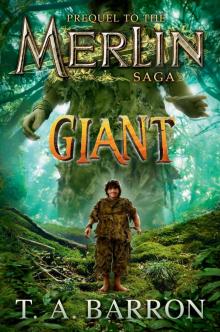 Giant
Giant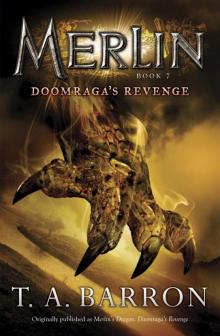 Doomraga's Revenge
Doomraga's Revenge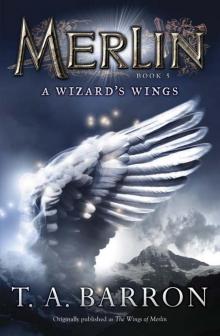 A Wizard's Wings
A Wizard's Wings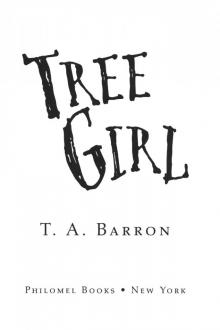 Tree Girl
Tree Girl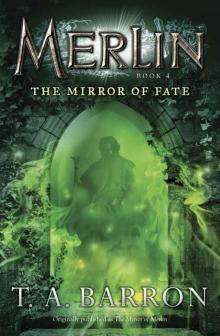 The Mirror of Fate
The Mirror of Fate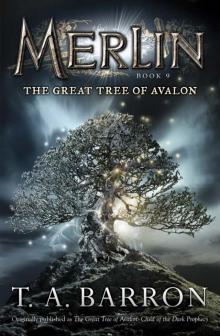 The Great Tree of Avalon
The Great Tree of Avalon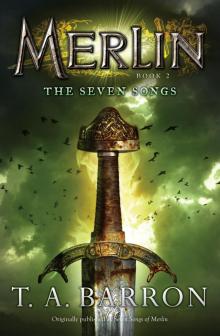 The Seven Songs
The Seven Songs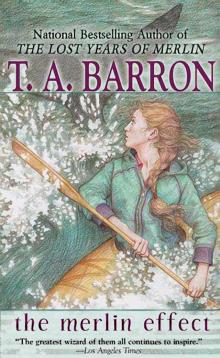 The Merlin Effect
The Merlin Effect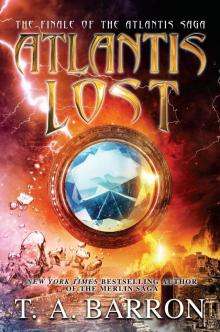 Atlantis Lost
Atlantis Lost Ultimate Magic
Ultimate Magic Atlantis in Peril
Atlantis in Peril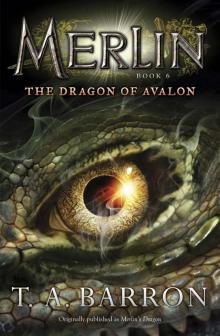 The Dragon of Avalon
The Dragon of Avalon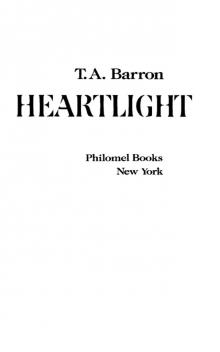 Heartlight
Heartlight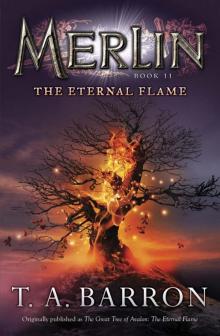 The Eternal Flame
The Eternal Flame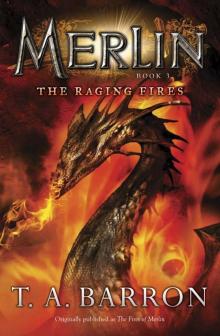 The Raging Fires
The Raging Fires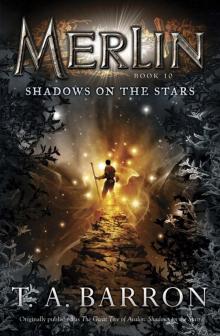 Shadows on the Stars
Shadows on the Stars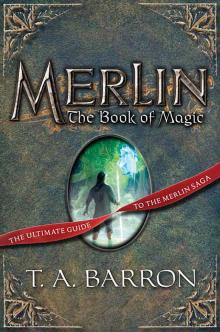 Merlin: The Book of Magic
Merlin: The Book of Magic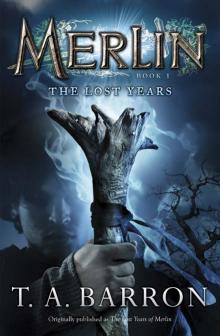 The Lost Years
The Lost Years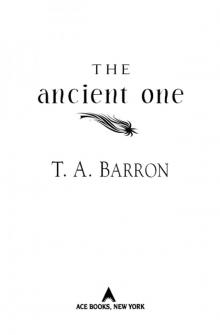 The Ancient One
The Ancient One Atlantis Rising
Atlantis Rising